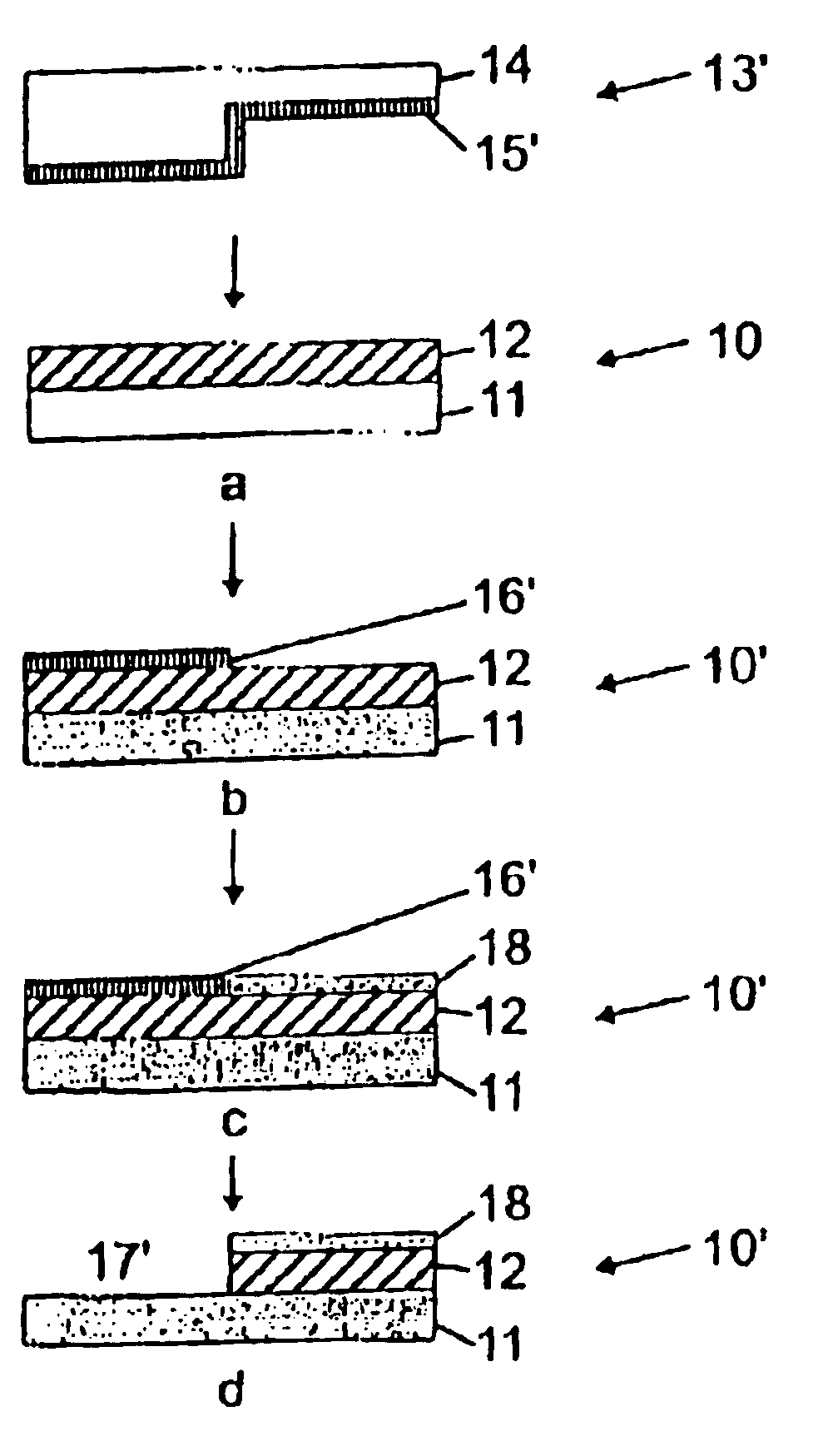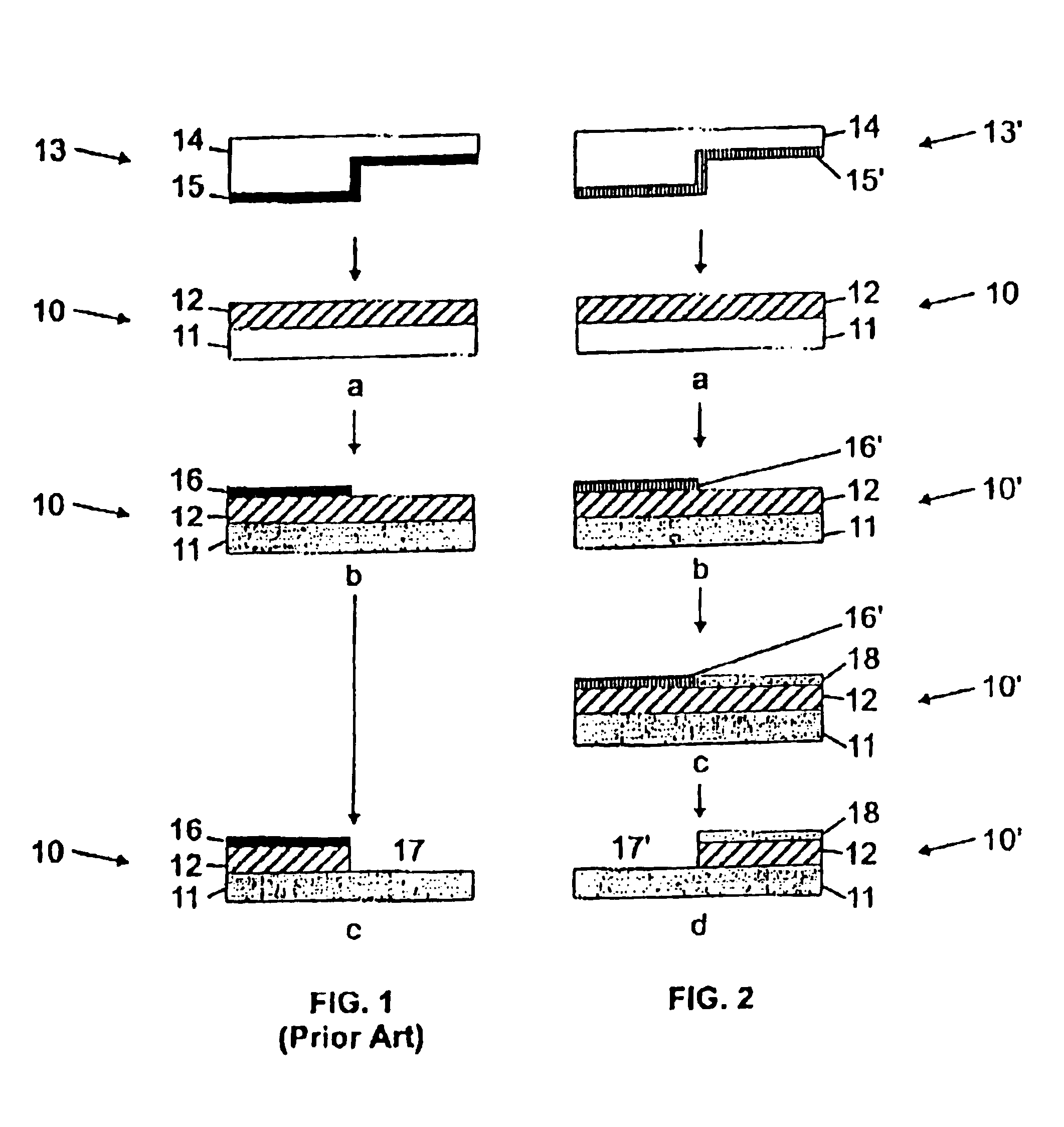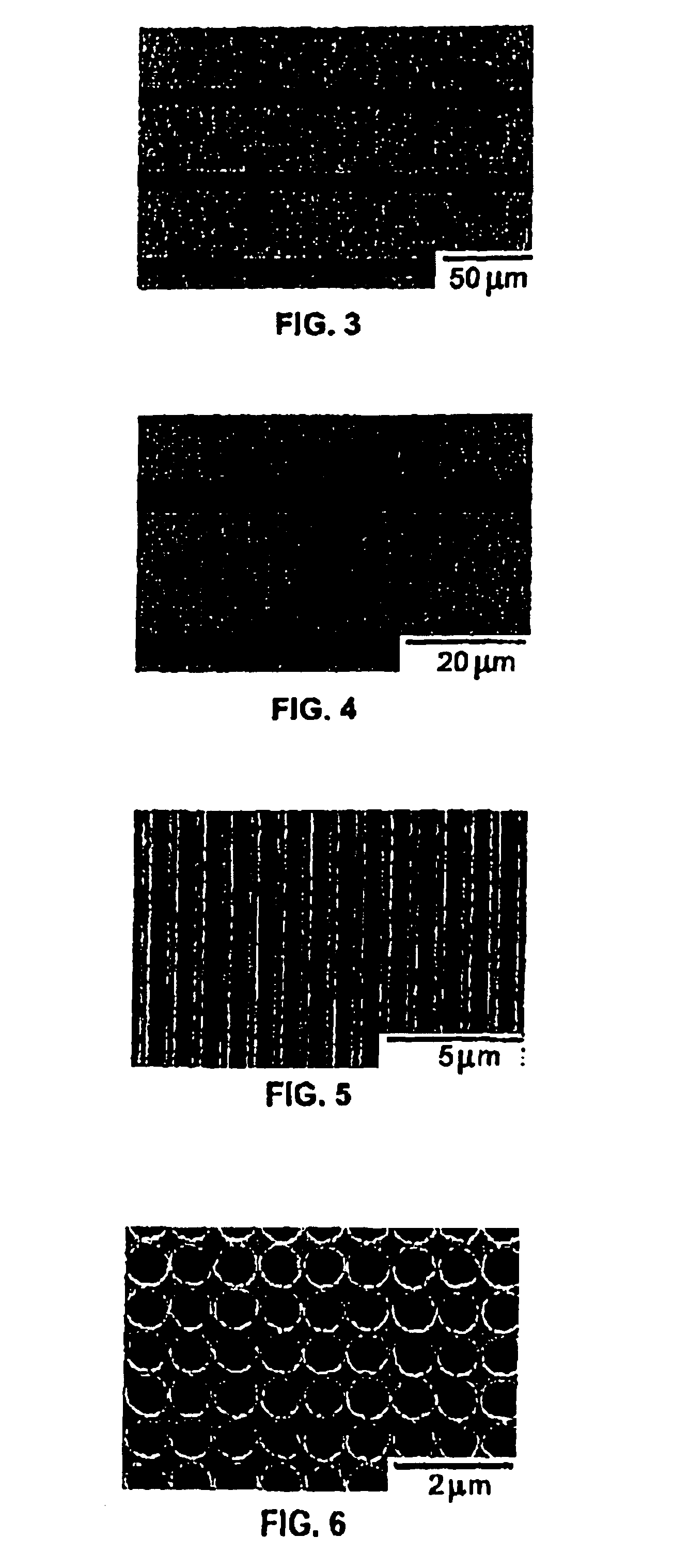Method of patterning the surface of an article using positive microcontact printing
a positive type, microcontact technology, applied in the direction of nanoinformatics, photomechanical equipment, instruments, etc., can solve the problems of slow and expensive e-beam lithography, inability to achieve high-quality patterns, so as to reduce both cost and process complexity, and improve mechanical stability.
- Summary
- Abstract
- Description
- Claims
- Application Information
AI Technical Summary
Benefits of technology
Problems solved by technology
Method used
Image
Examples
first embodiment
[0050]A first embodiment is conducted with a same object as used in the standard negative MCP described above by reference to FIGS. 1a-1c. Object 10 thus still comprises a 20-nm-thick Au layer 12 which is evaporated using an electron-beam evaporator on a silicon wafer substrate 11 having a film (20 nm) of native oxide. A 1-nm-thick layer of Ti which plays the role of an adhesion promoter is also evaporated therebetween as standard. In FIG. 2a, there is shown a micropatterned stamp 13′ comprising a PDMS body 14 inked with a 0.3 mM solution of pentaerythritol-tetrakis (3-mercaptopropionate) (abbreviated PTMP) in ethanol for 1 min to form the stamping pattern 15′. After the stamp 13′ is blown dry, e.g. using N2, it is applied onto the substrate surface with the layer 12 and the conformal contact between the stamp 13′ and the layer 12 ensures substantially homogeneous transfer of PTMP molecules to the layer 12. The print lasts for 30 s before the stamp 13′ is removed resulting in the fo...
second embodiment
[0052]The second embodiment demonstrates the feasibility to produce patterns in a Cu layer. In this case, the object 10 now comprises a silicon wafer as the substrate 11 having a 1-nm-thick titanium layer formed thereon as an adhesion promoter coated with a 100-nm-thick copper (Cu) layer 12 deposited in an electron-beam evaporator. The high conductivity of Cu makes it a good material for forming conductive patterns atop semiconductor structures. Because Cu exposed to ambient conditions tends to oxidize, the 100 nm thick copper (Cu) plated substrate is first immersed in 4% HCl in deionized (DI) water for 10 s to remove native copper oxide, then removed. Next, the object 10 is copiously rinsed with DI water and dried with a stream of N2. Now, according to the present invention, the PDMS stamp 14 is inked with a 0.2 mM solution of PTMP in ethanol for 1 min, to form a stamping pattern 15′ thereon, as shown in FIG. 2a. The Cu layer 12 is printed with the stamp 13′ forming the first SAM 1...
third embodiment
[0053]A third embodiment demonstrates the possibility of forming patterns on the 100-nm length scales. In this case, object 10 consists of a silicon wafer (having a 1 nm thick titanium layer formed thereon as an adhesion promoter) coated with a 50 nm thick copper (Cu) layer 12 deposited in an electron-beam evaporator. The Cu surface is treated as it is done in the previous example for removing the native oxide present on the Cu surface. Then, according to the present invention, the PDMS stamp 14 is inked with a 0.1 mM solution of PTMP in ethanol for 1 min, to form stamping pattern 15′, as shown in FIG. 2a. The Cu layer 12 surface is printed with the stamp 13′ forming the first SAM 16′, shown in FIG. 2b. Object 10 is then immersed in a 0.6 mM solution of eicosanethiol (ECT) in ethanol for 2 min. The purpose of this step is to deposit eicosanethiol in the unprinted areas as apparent in FIG. 2c and form the second SAM 18. Object 10 is removed from the bath, rinsed with ethanol and drie...
PUM
| Property | Measurement | Unit |
|---|---|---|
| pH | aaaaa | aaaaa |
| pH | aaaaa | aaaaa |
| thick | aaaaa | aaaaa |
Abstract
Description
Claims
Application Information
 Login to View More
Login to View More - R&D
- Intellectual Property
- Life Sciences
- Materials
- Tech Scout
- Unparalleled Data Quality
- Higher Quality Content
- 60% Fewer Hallucinations
Browse by: Latest US Patents, China's latest patents, Technical Efficacy Thesaurus, Application Domain, Technology Topic, Popular Technical Reports.
© 2025 PatSnap. All rights reserved.Legal|Privacy policy|Modern Slavery Act Transparency Statement|Sitemap|About US| Contact US: help@patsnap.com



